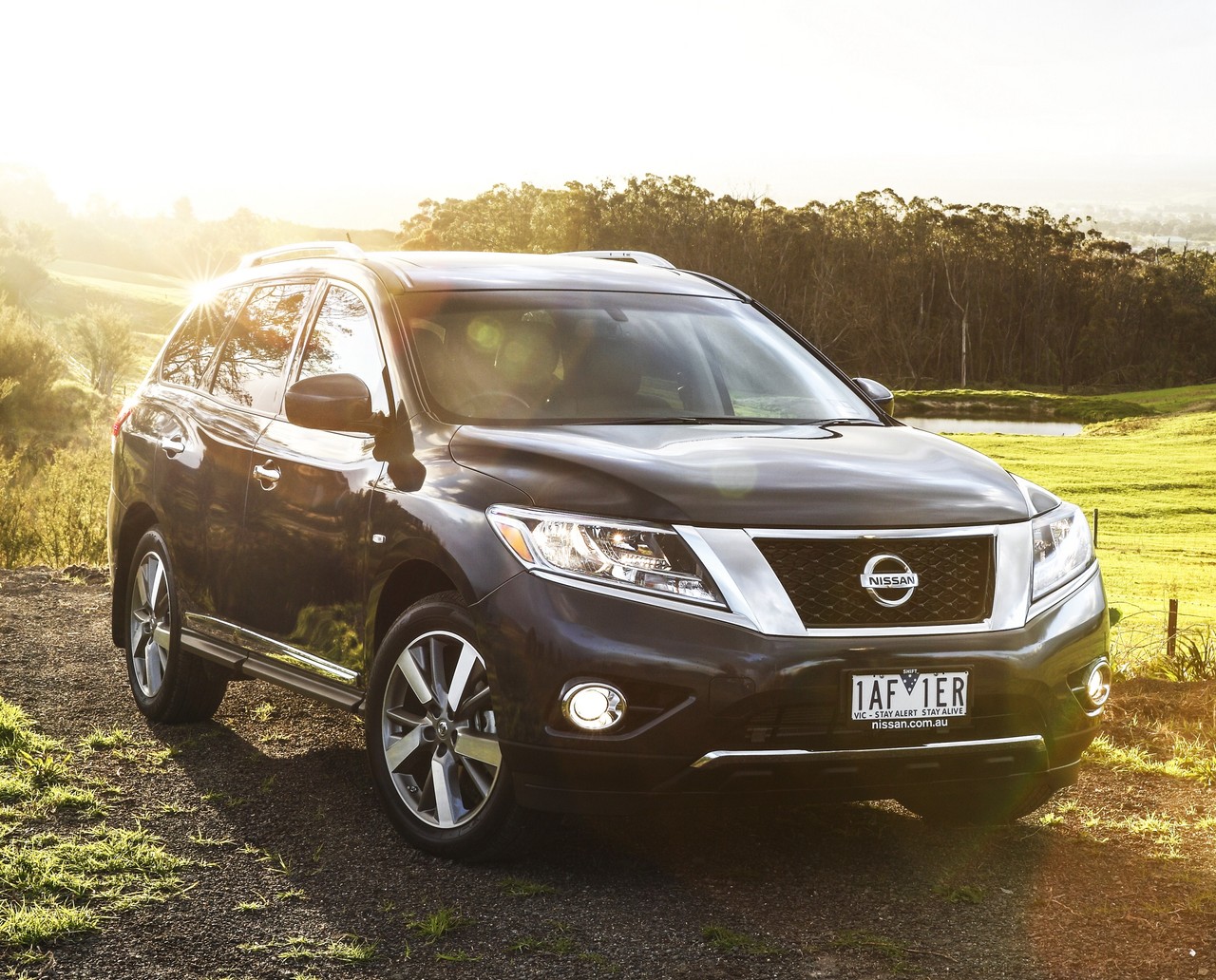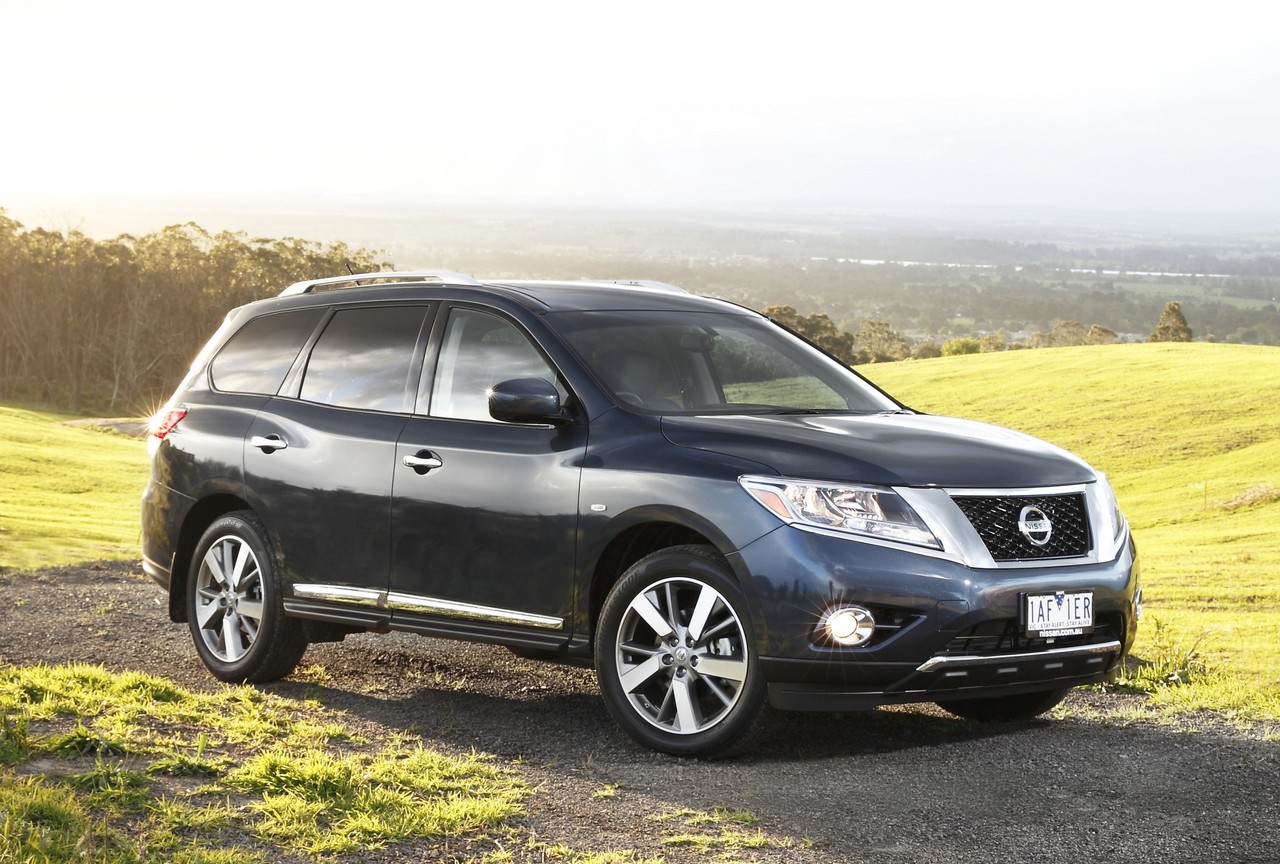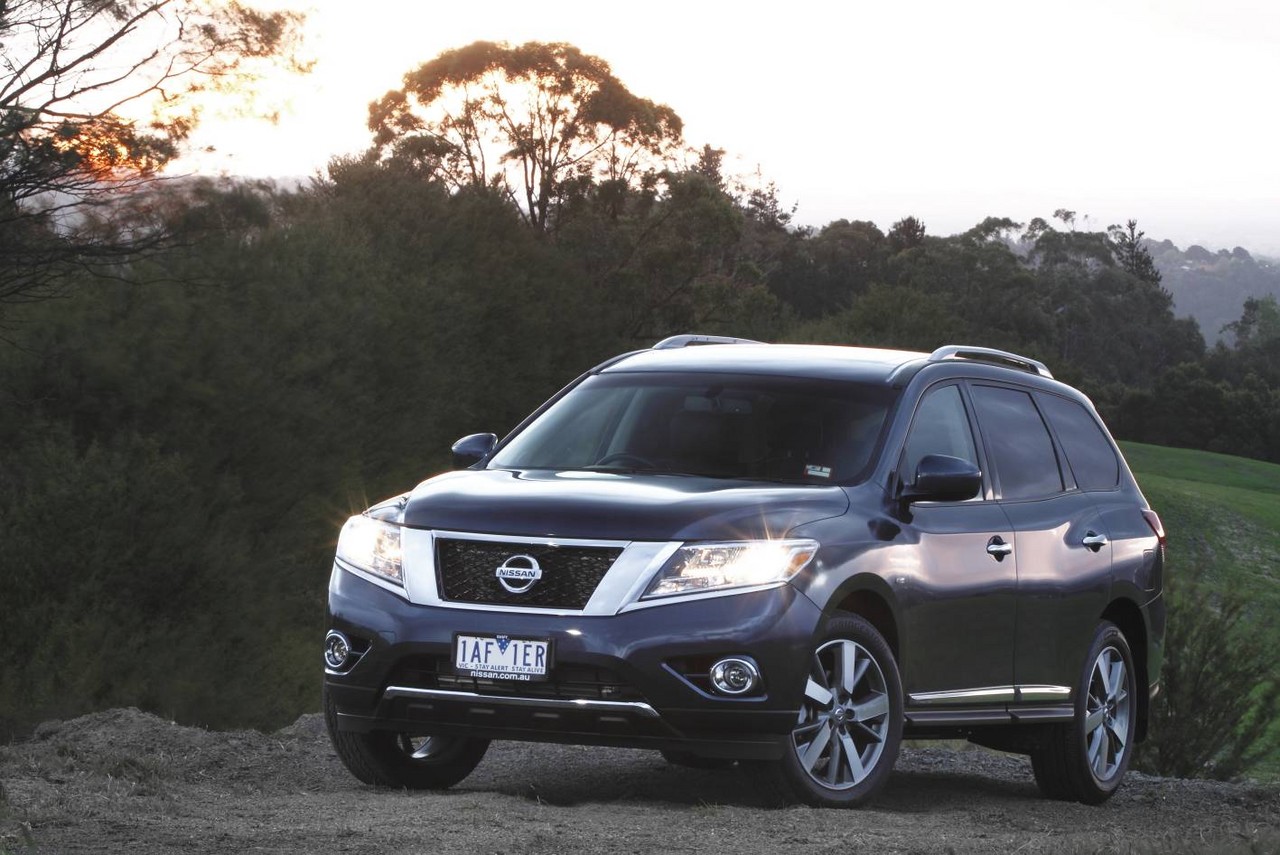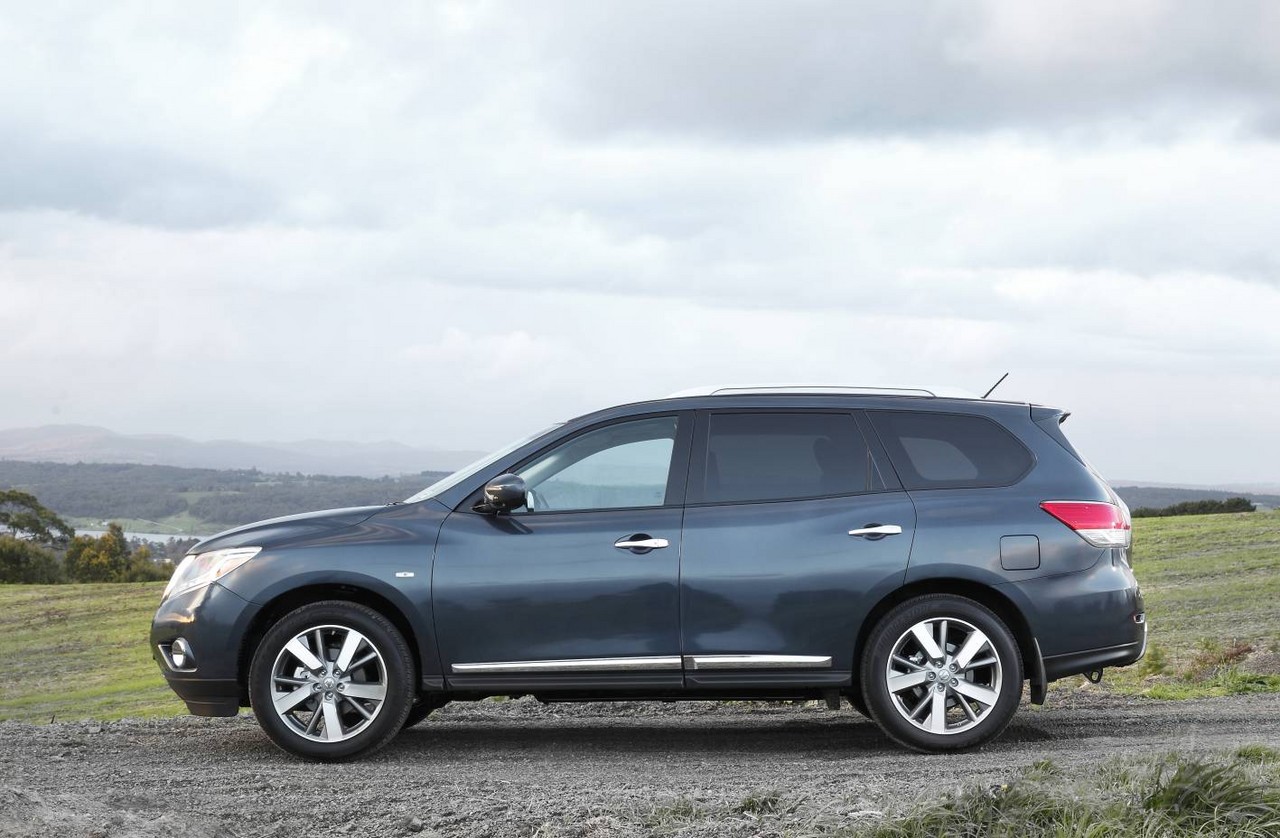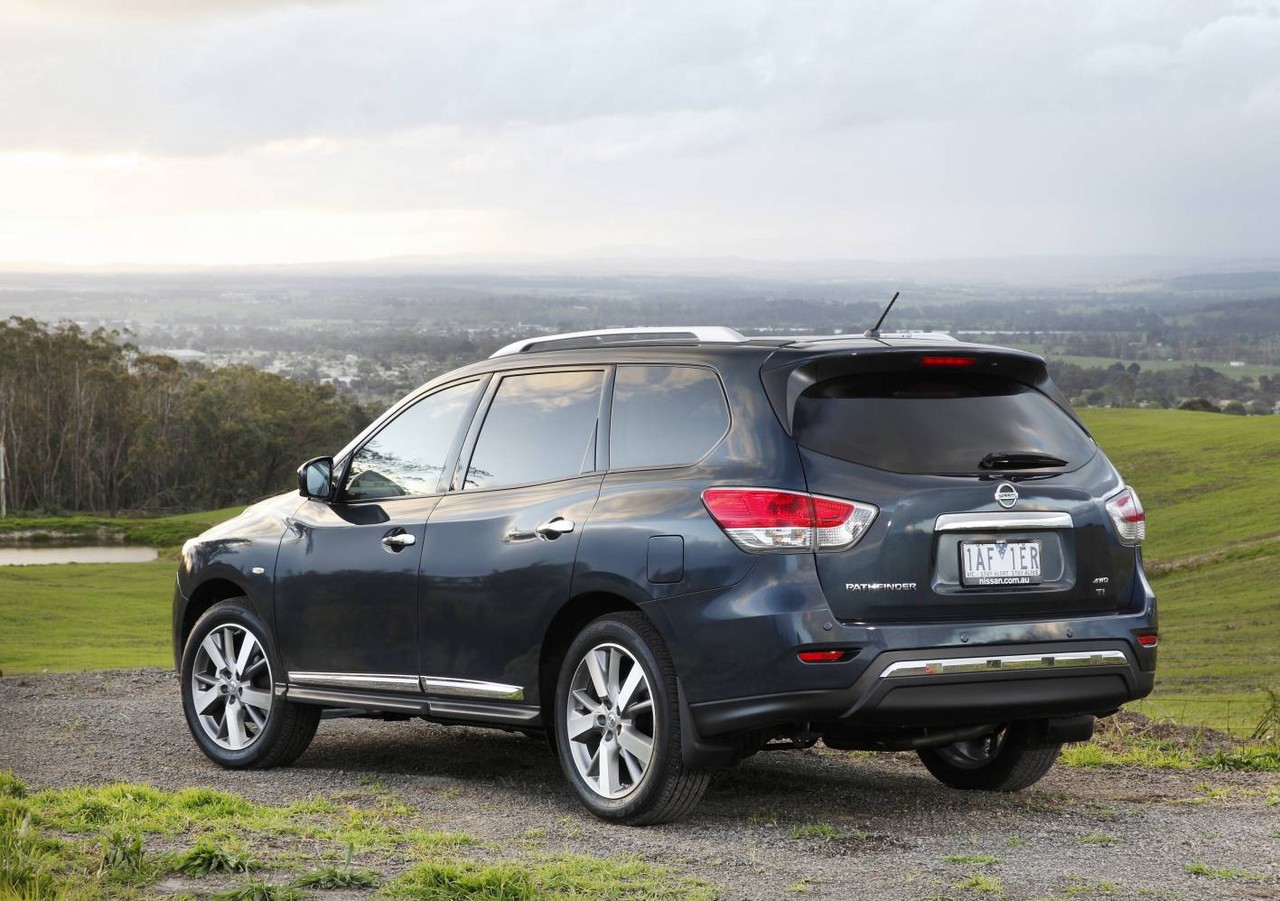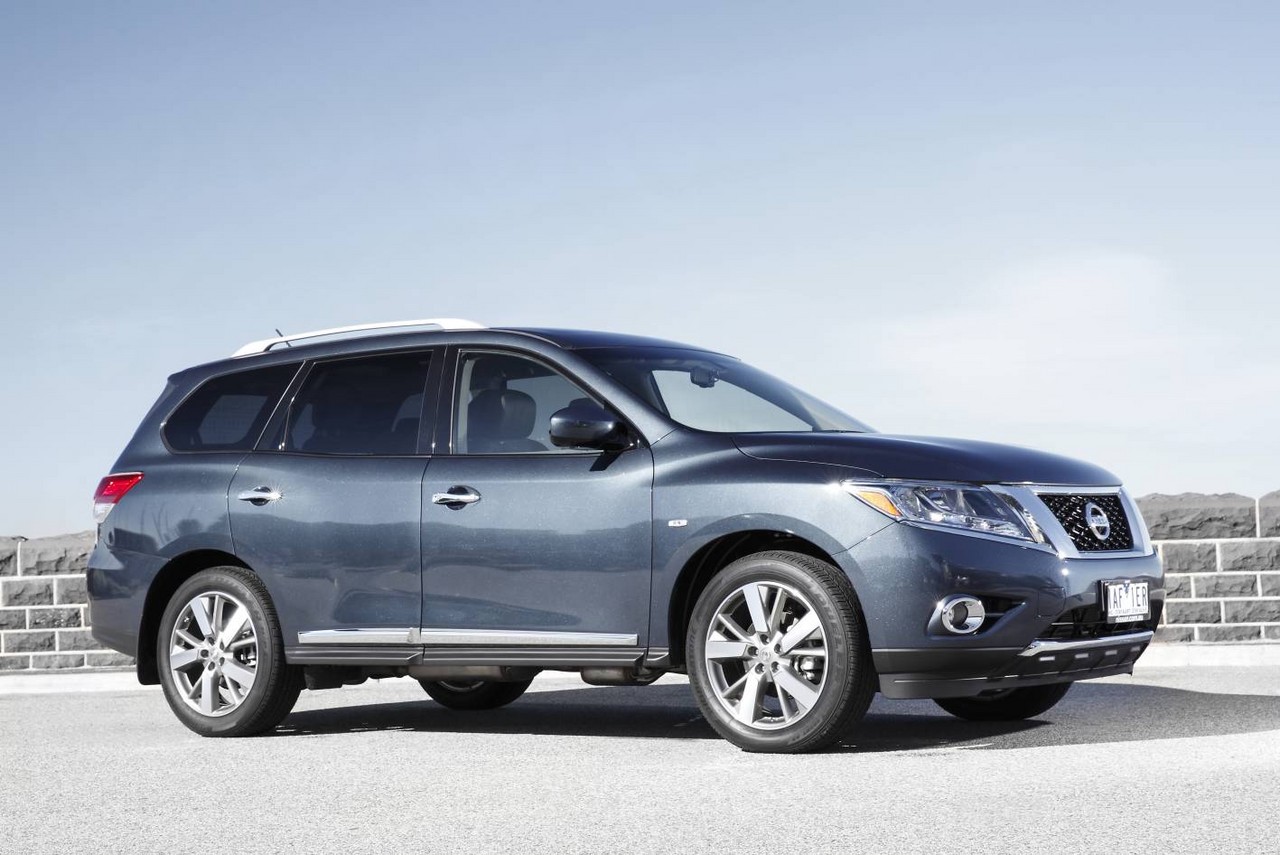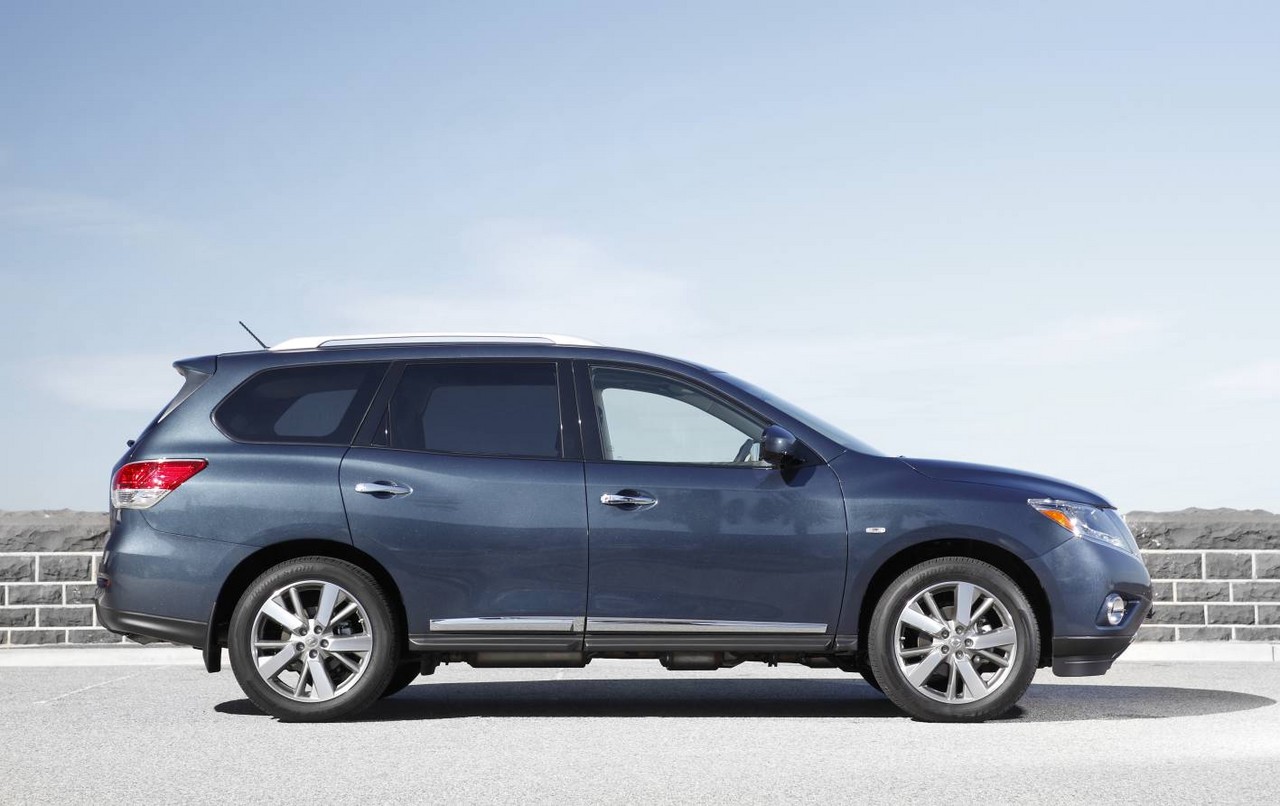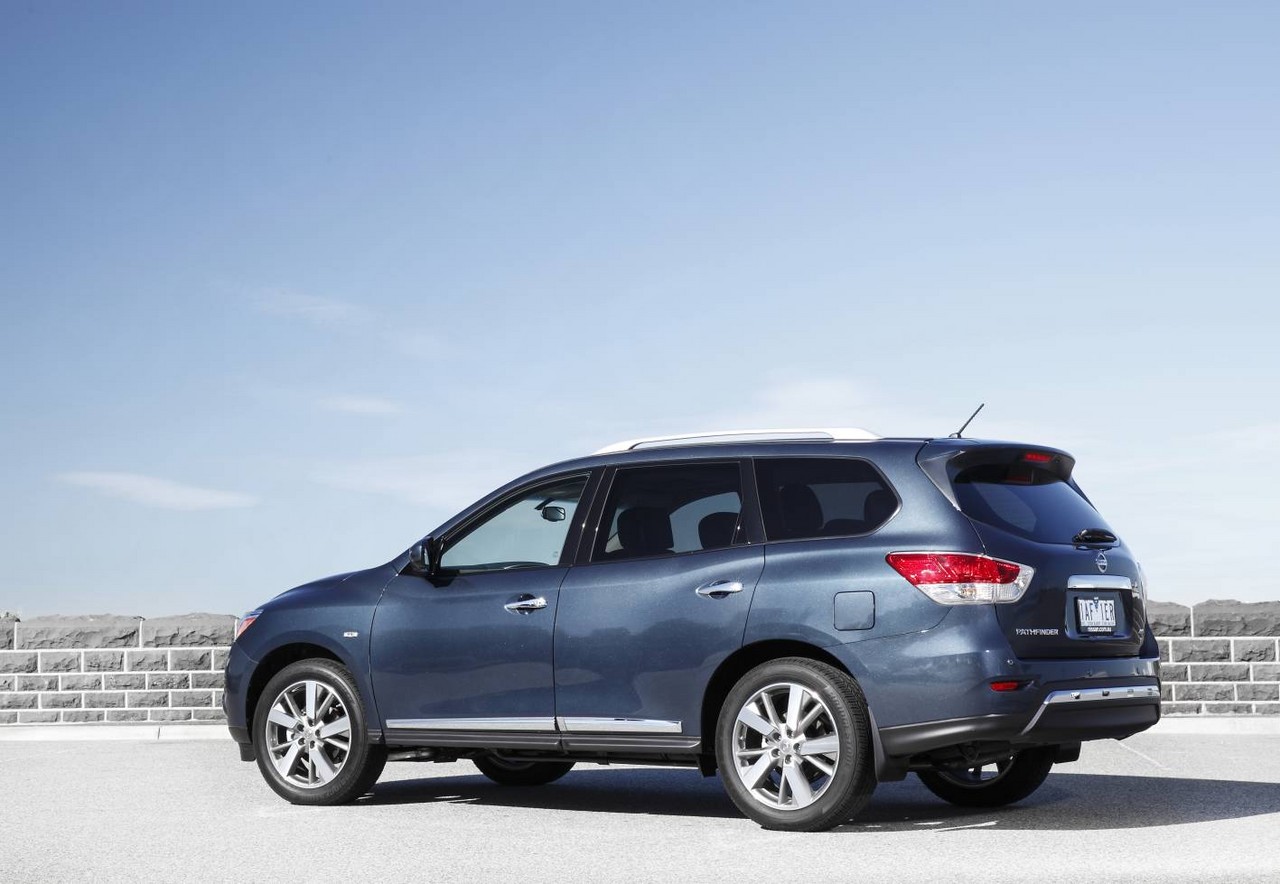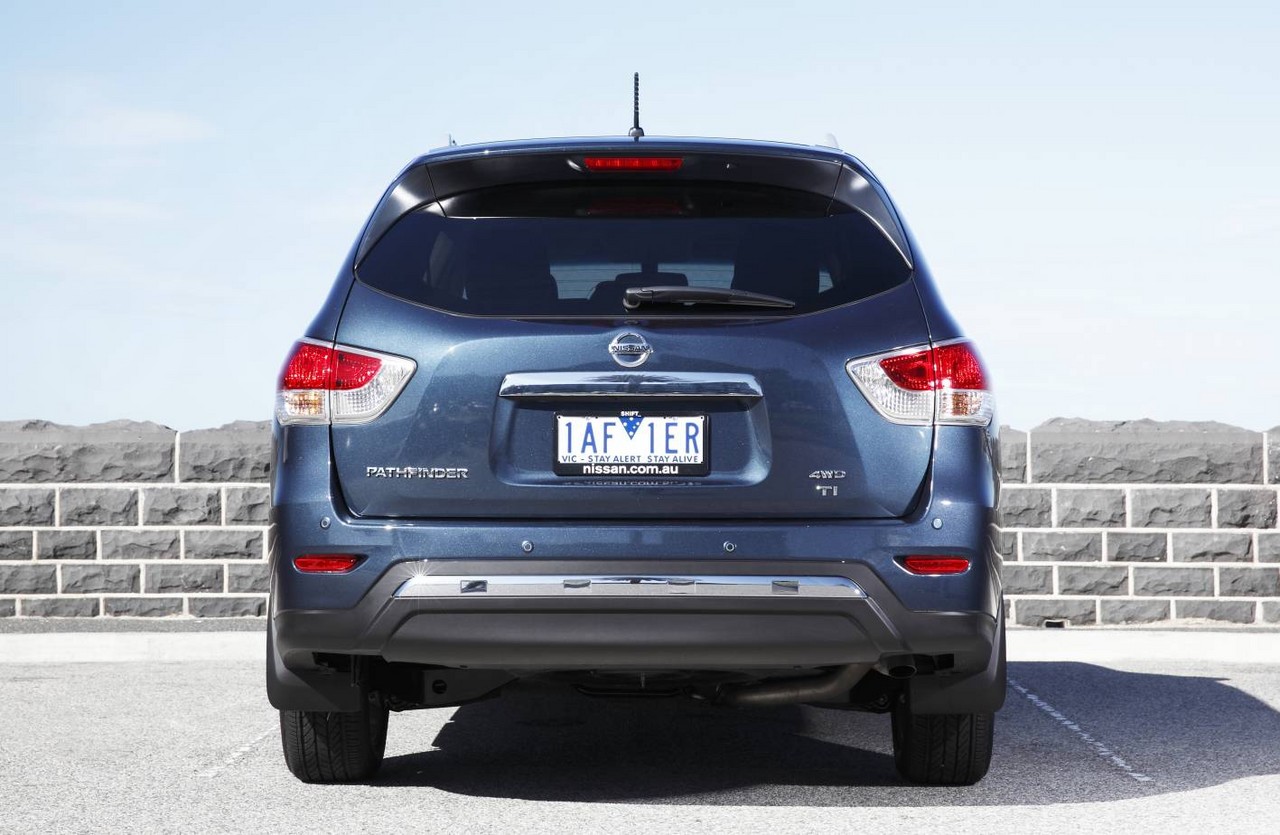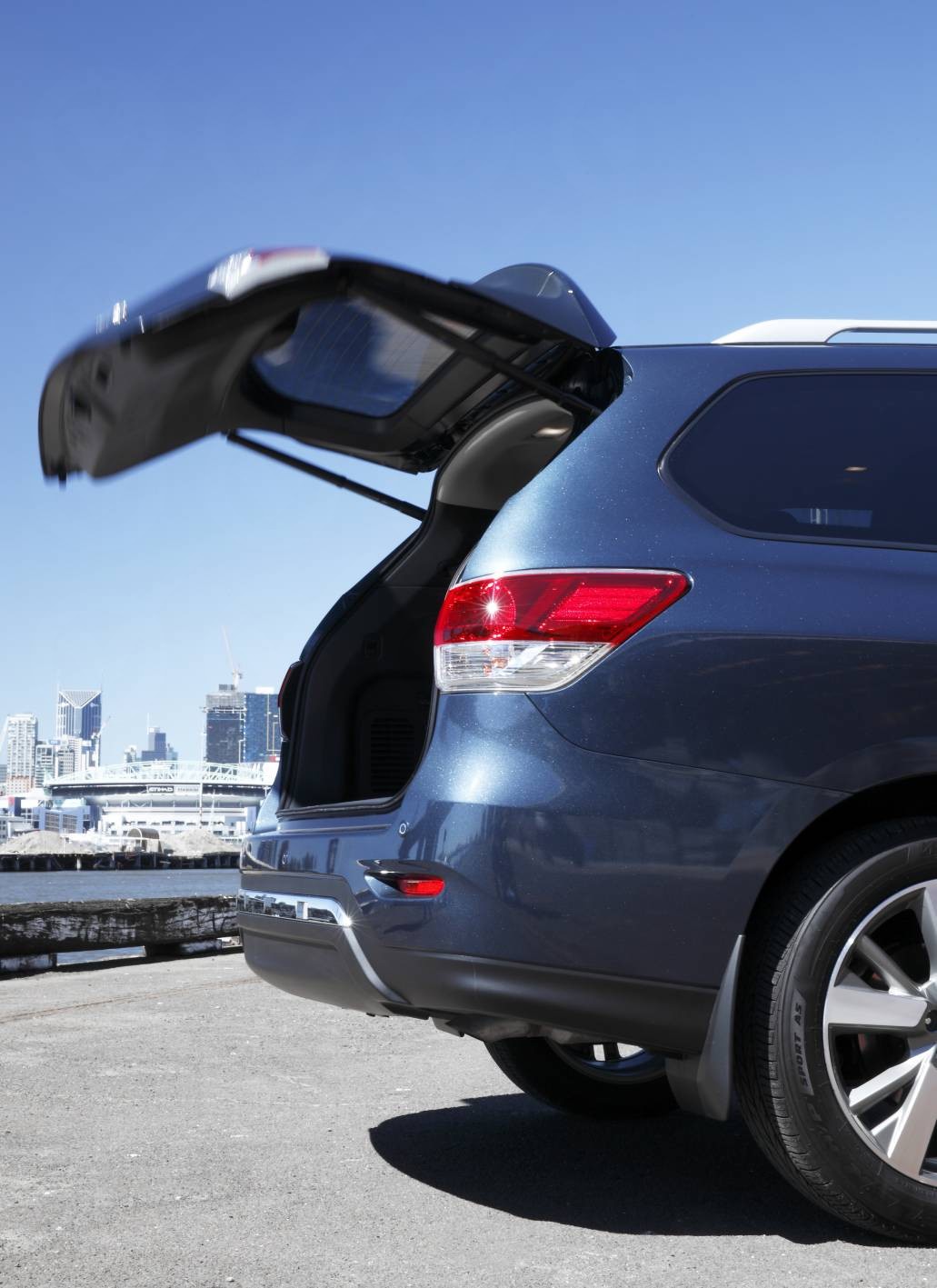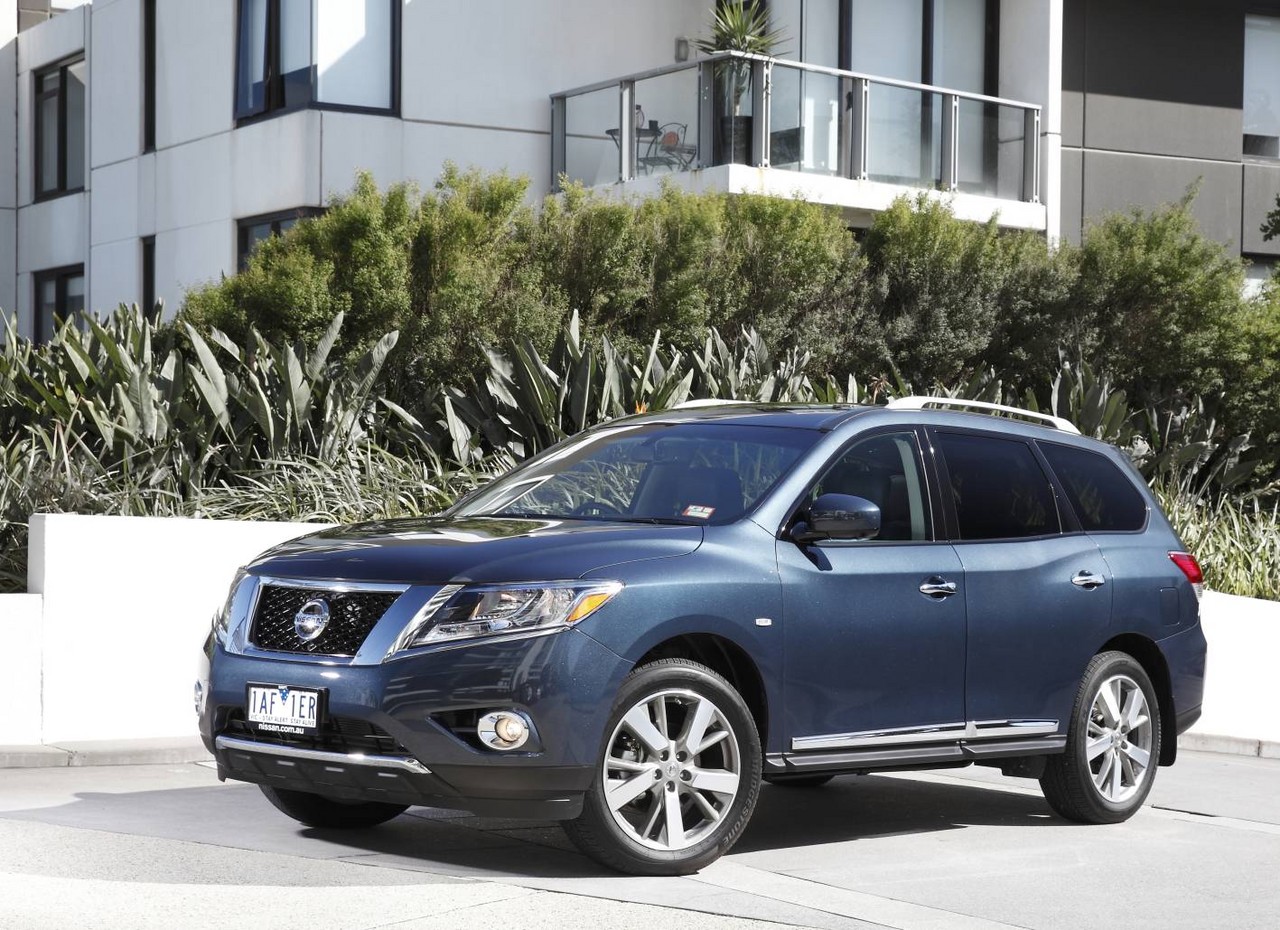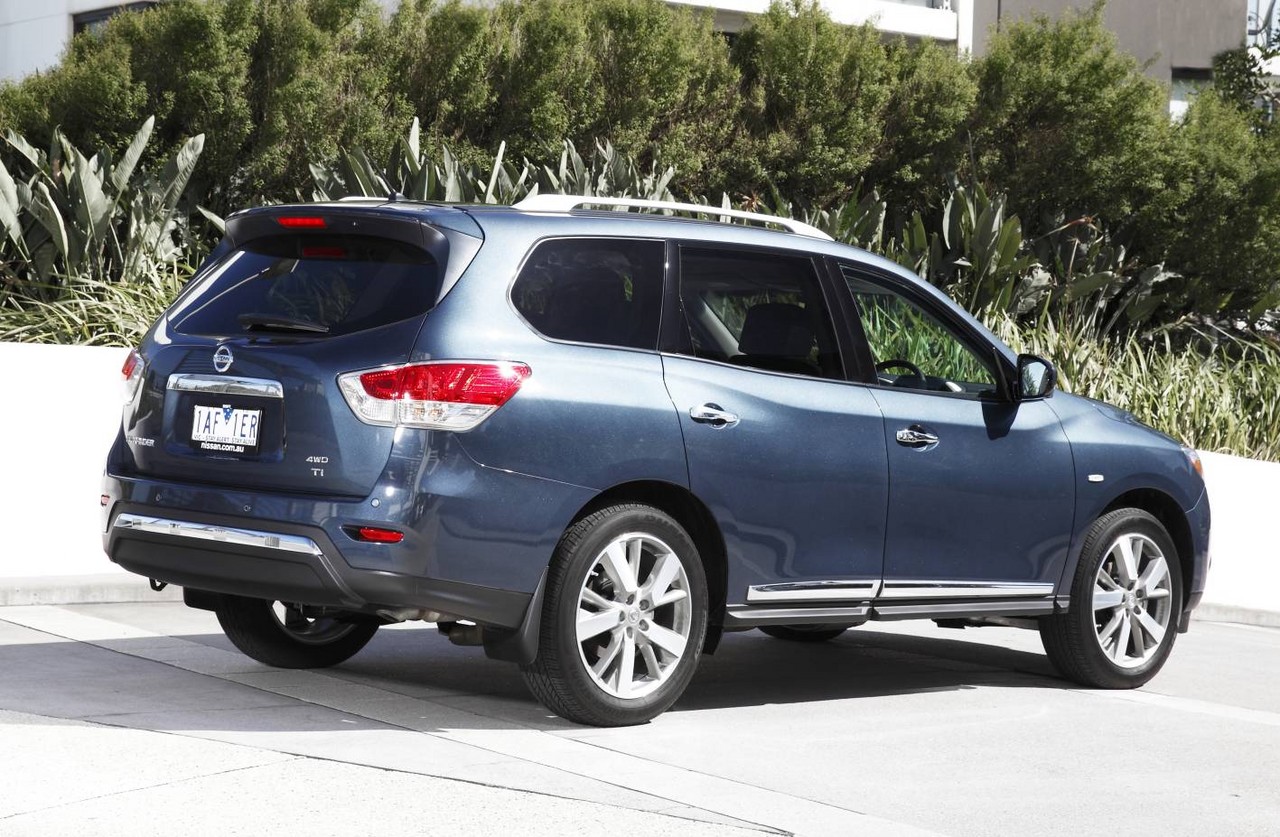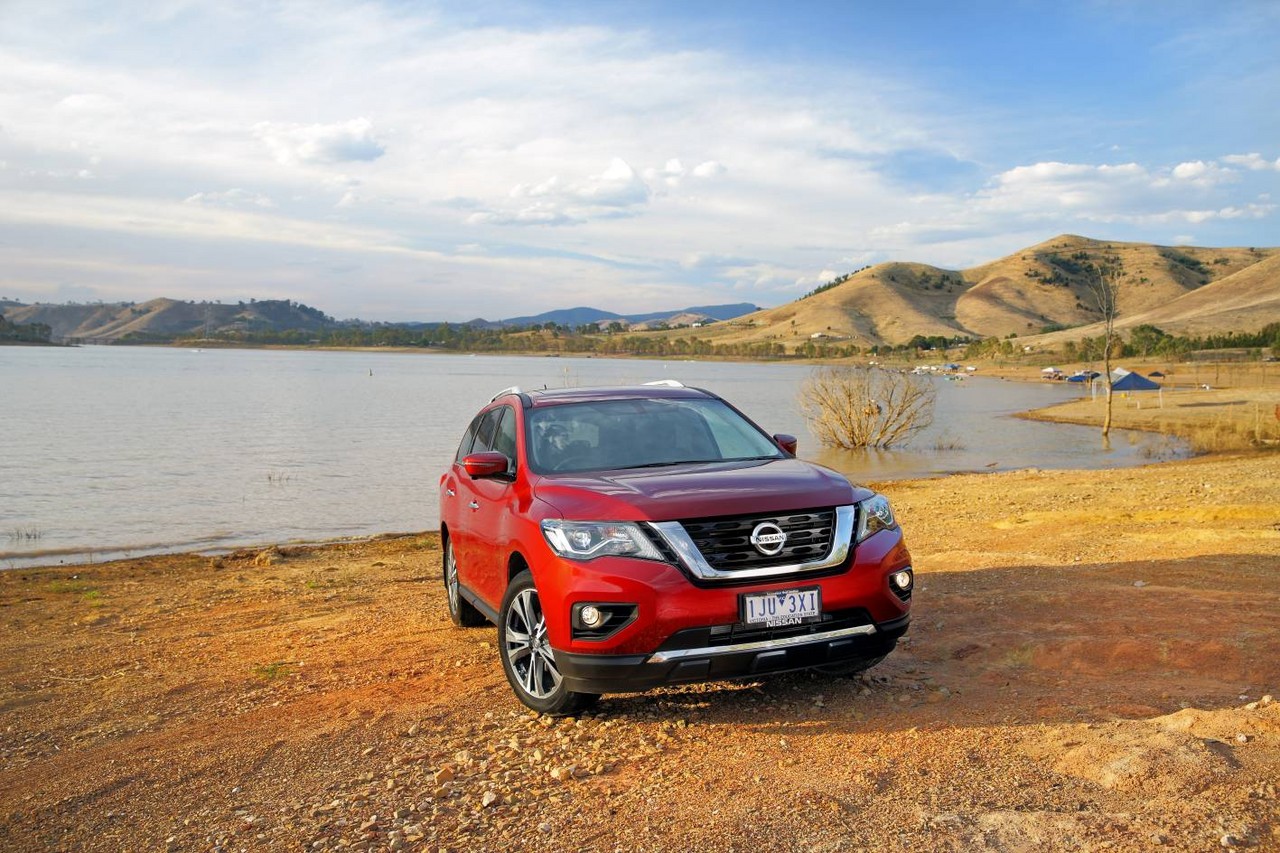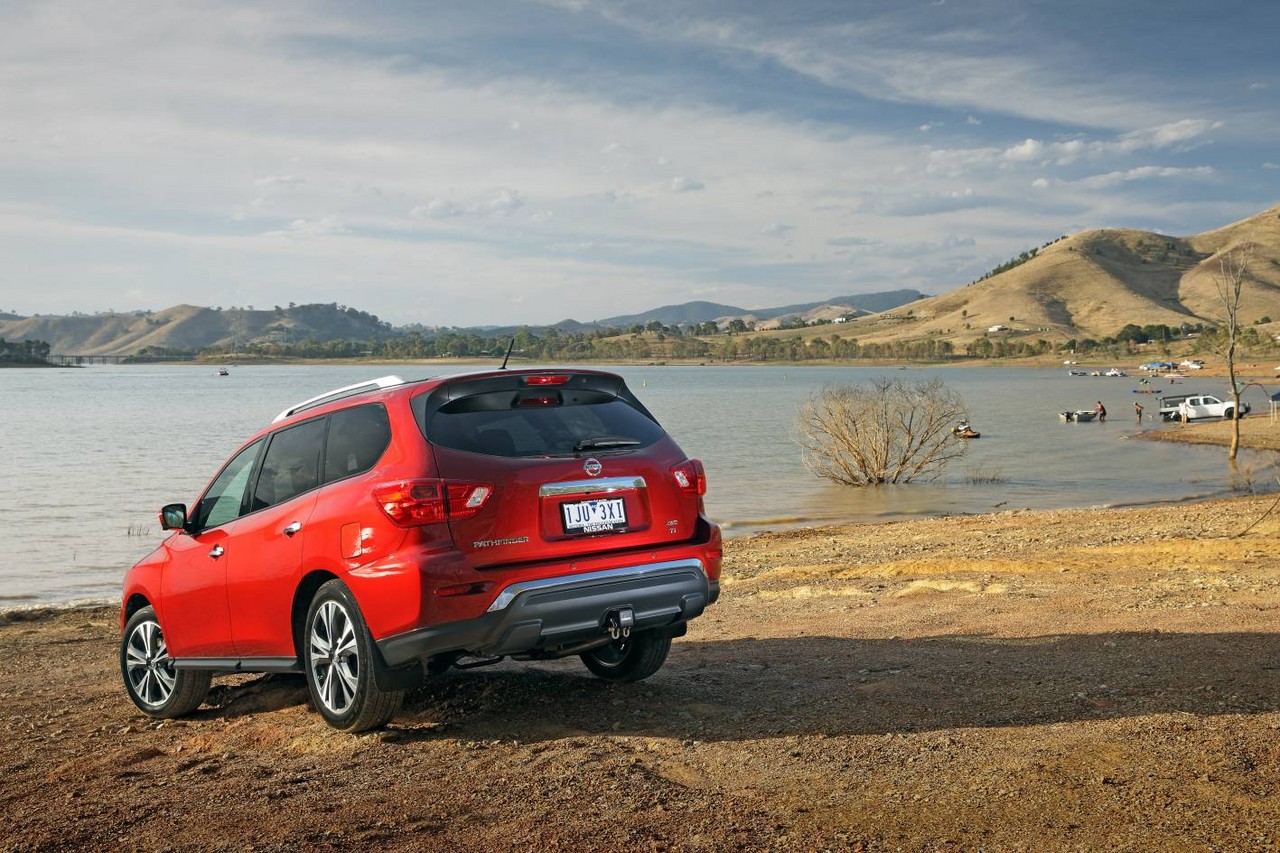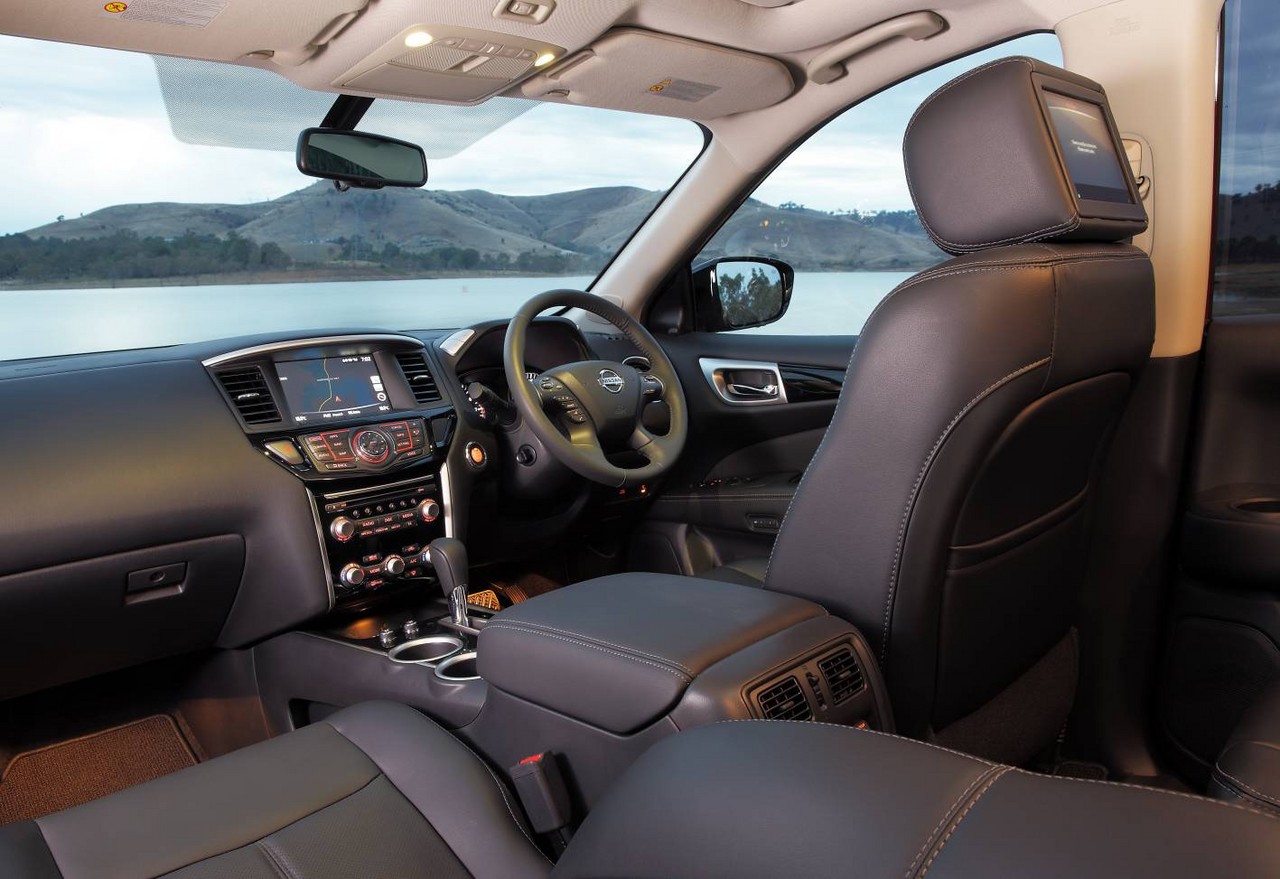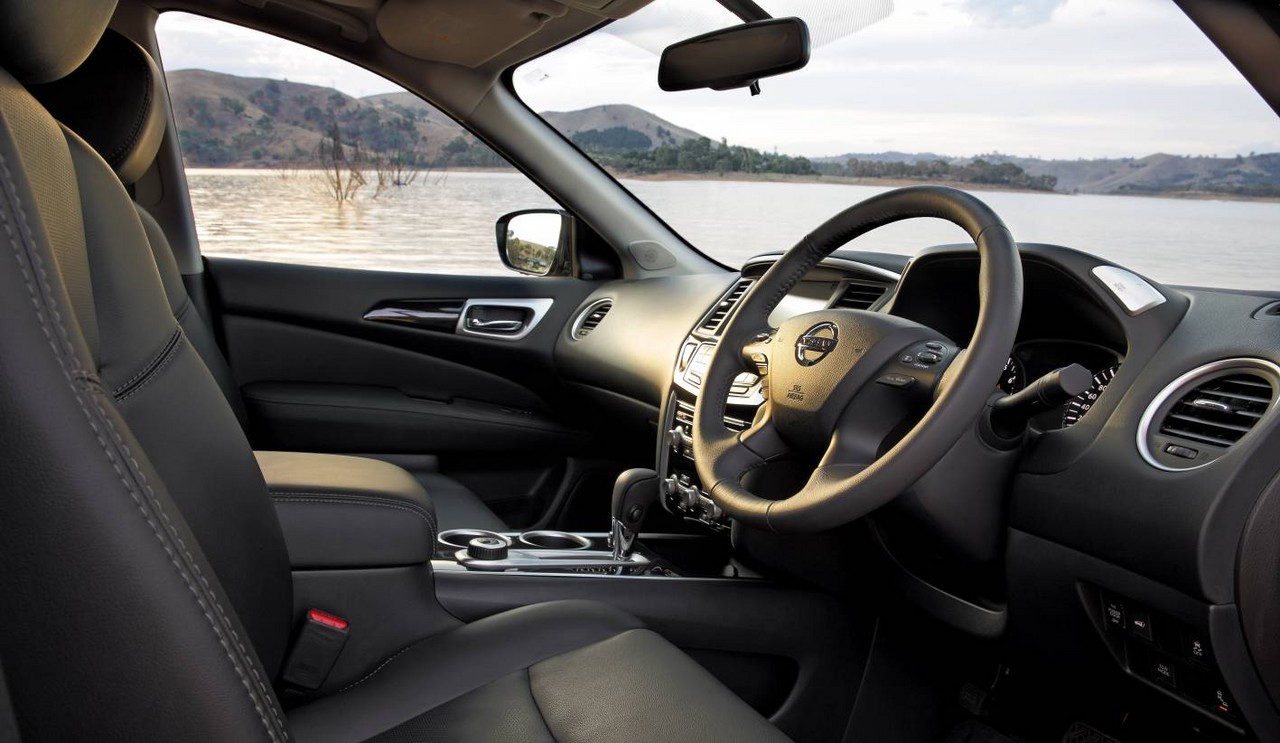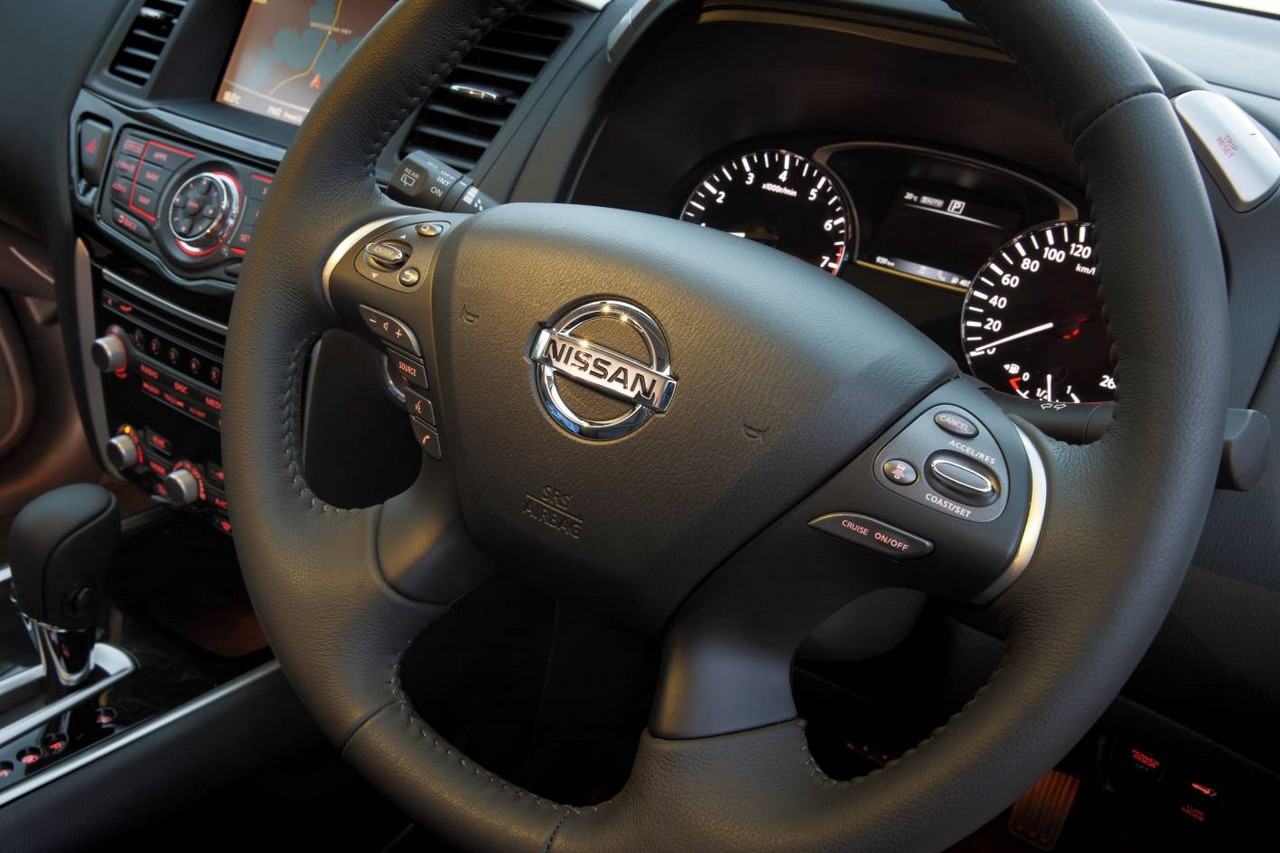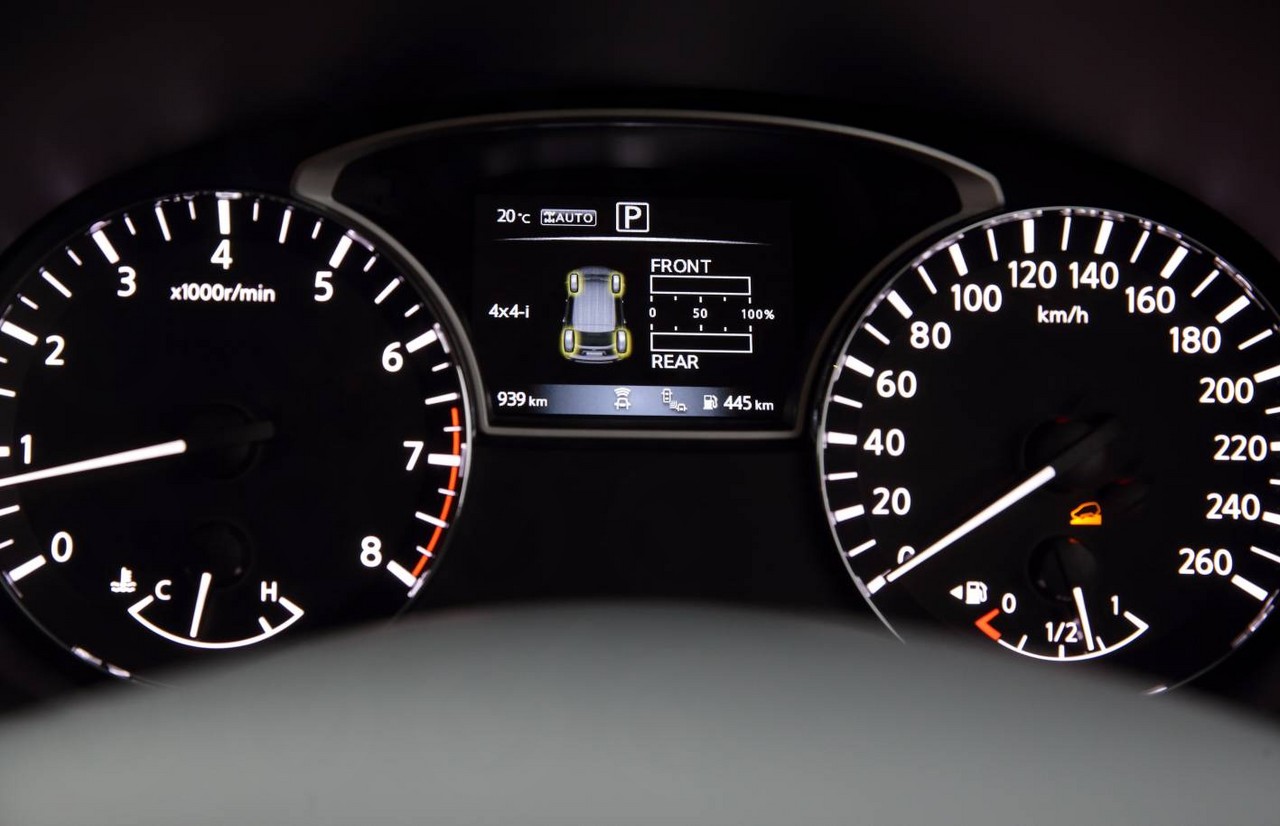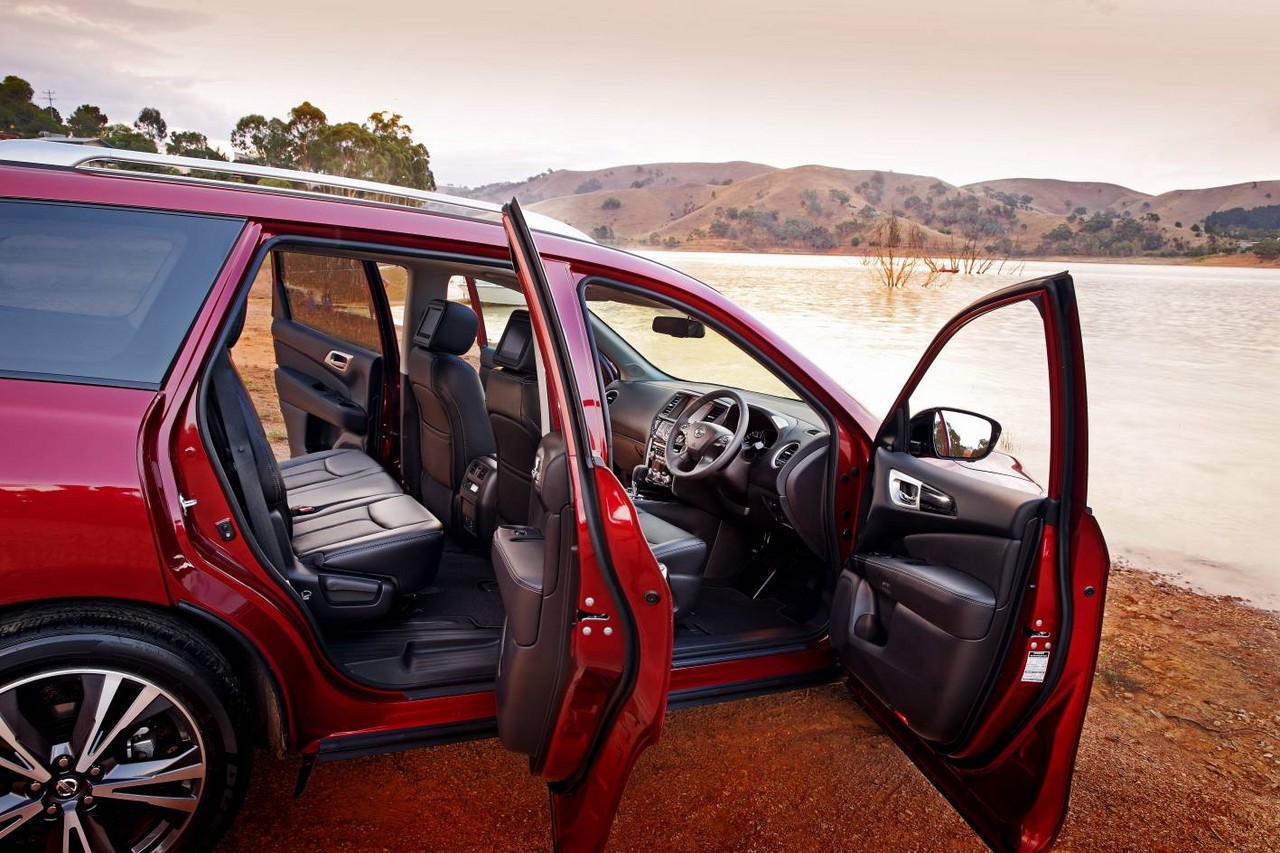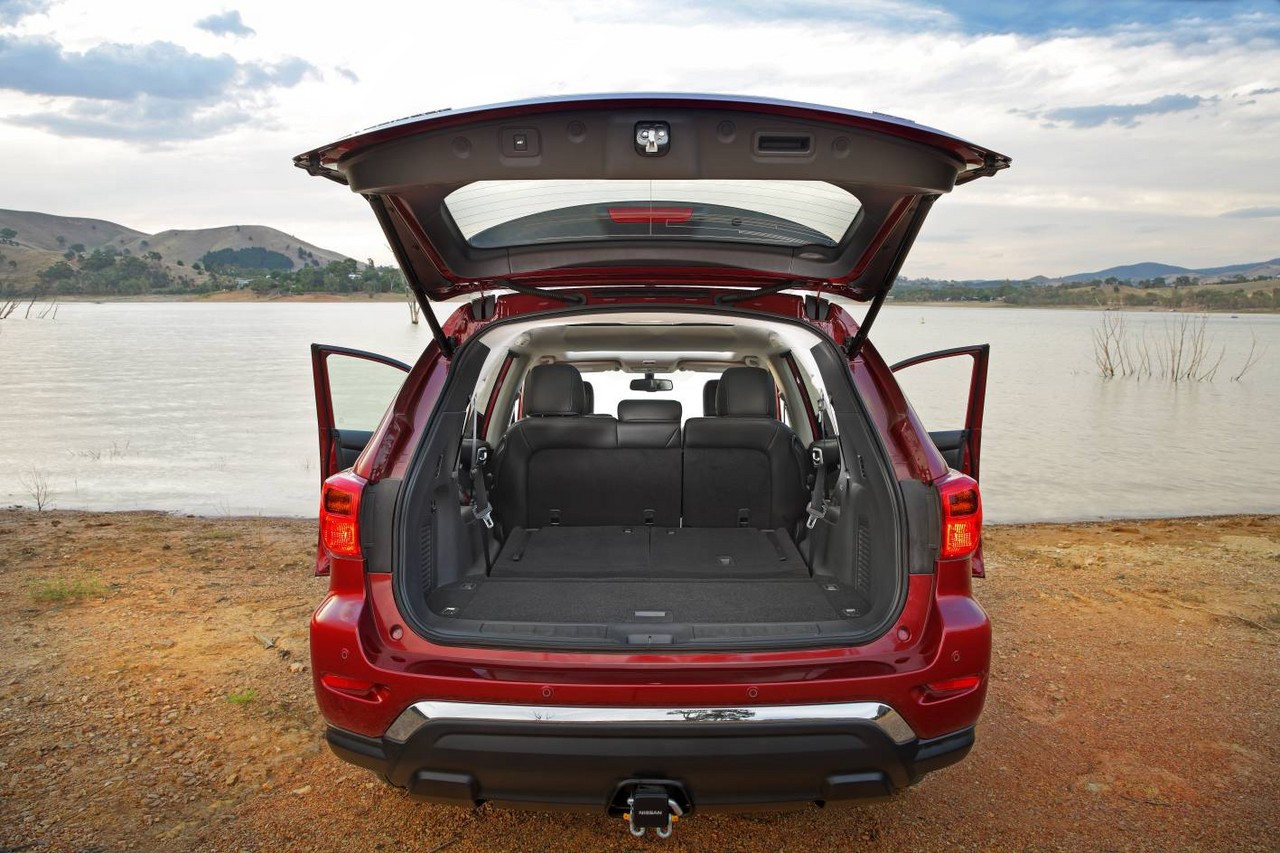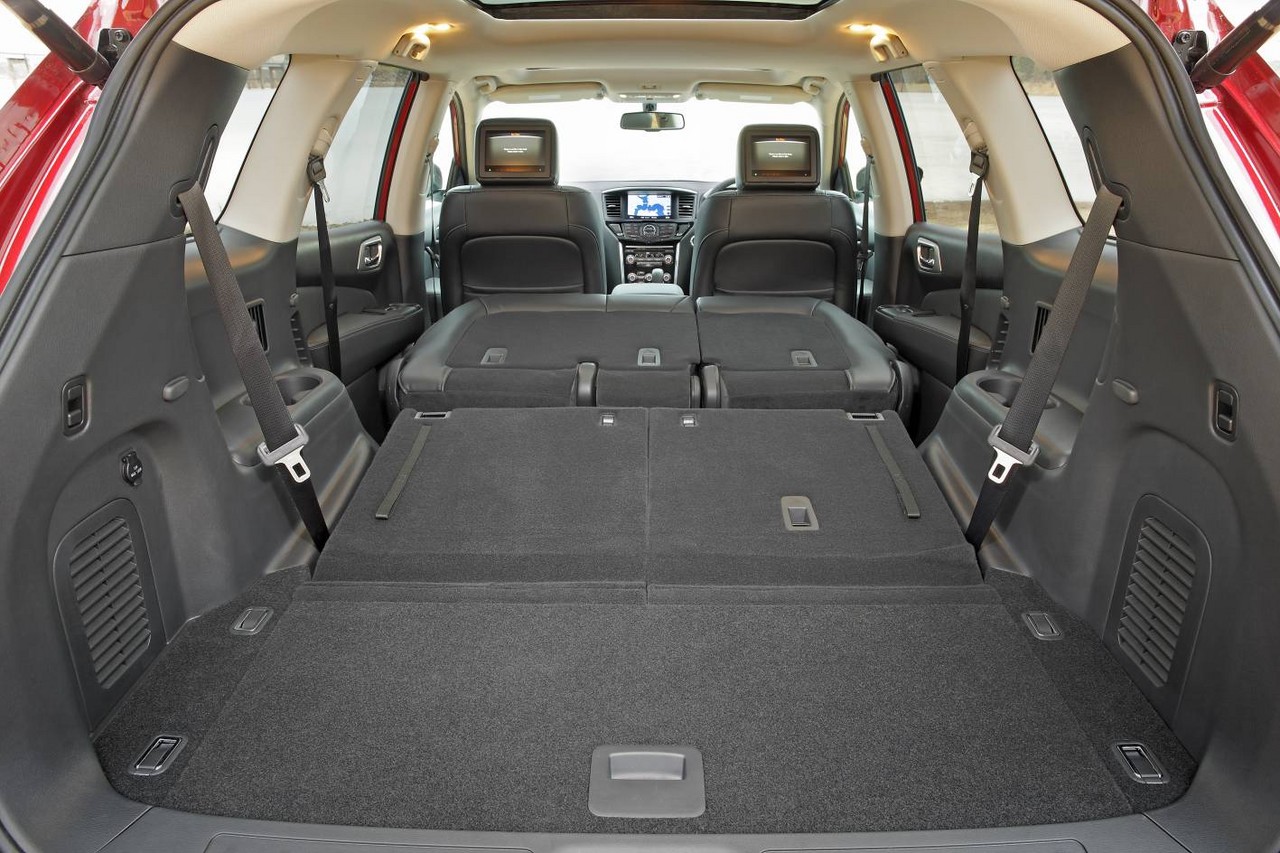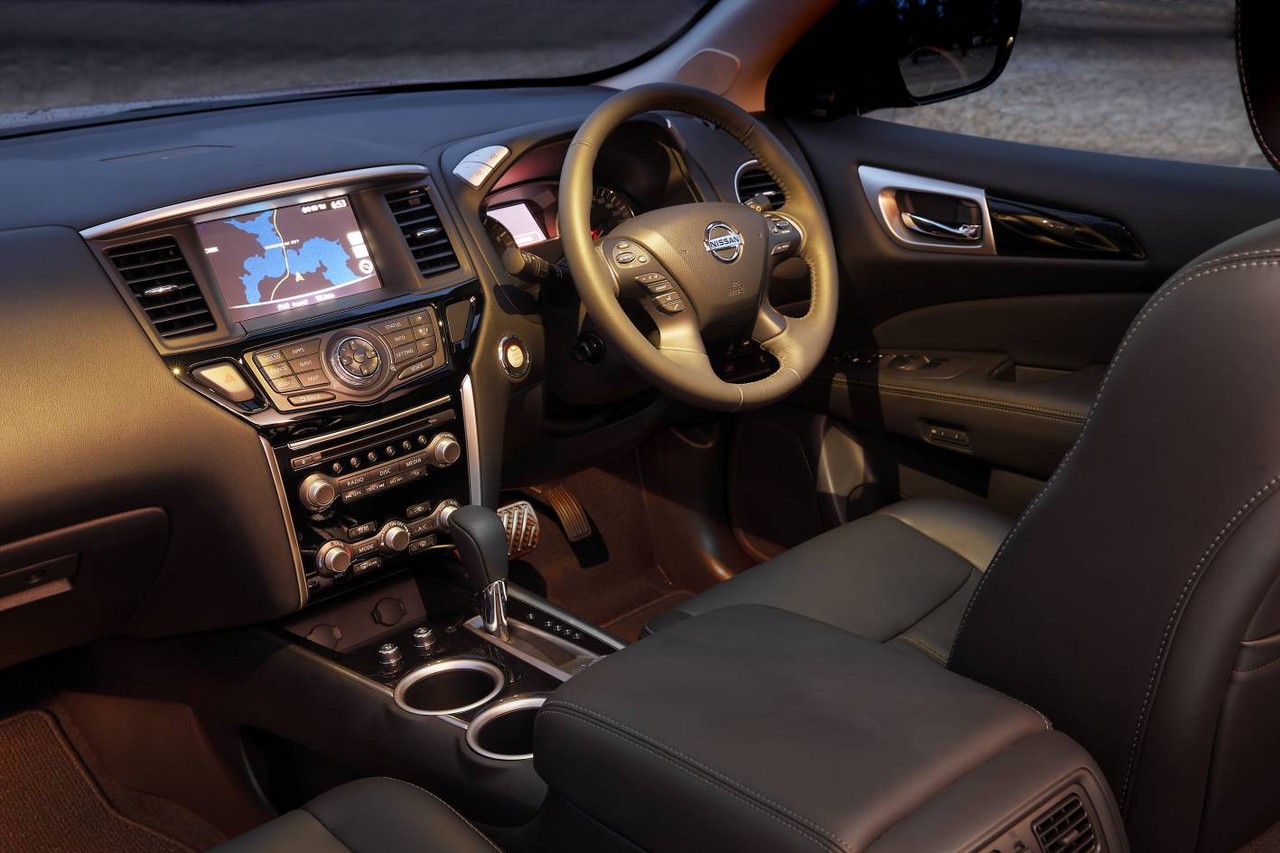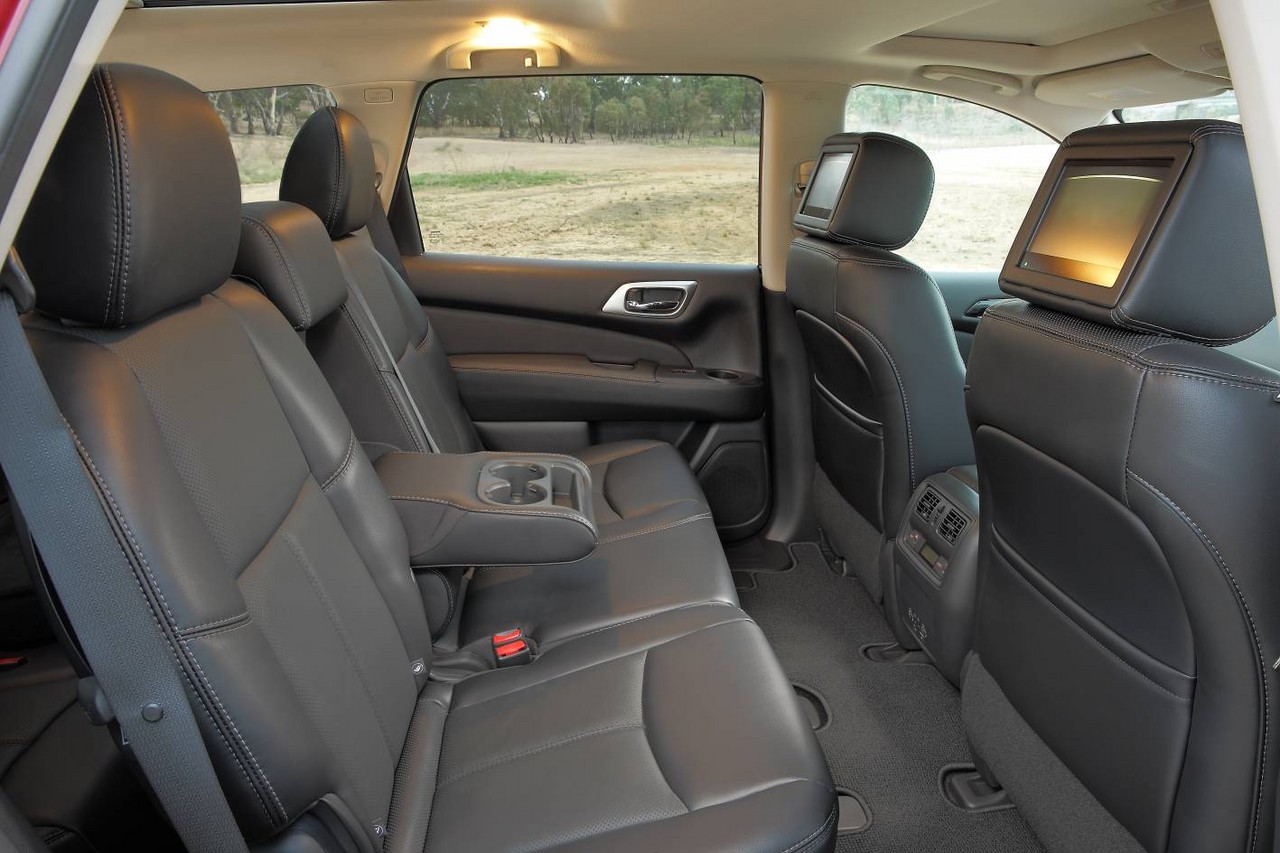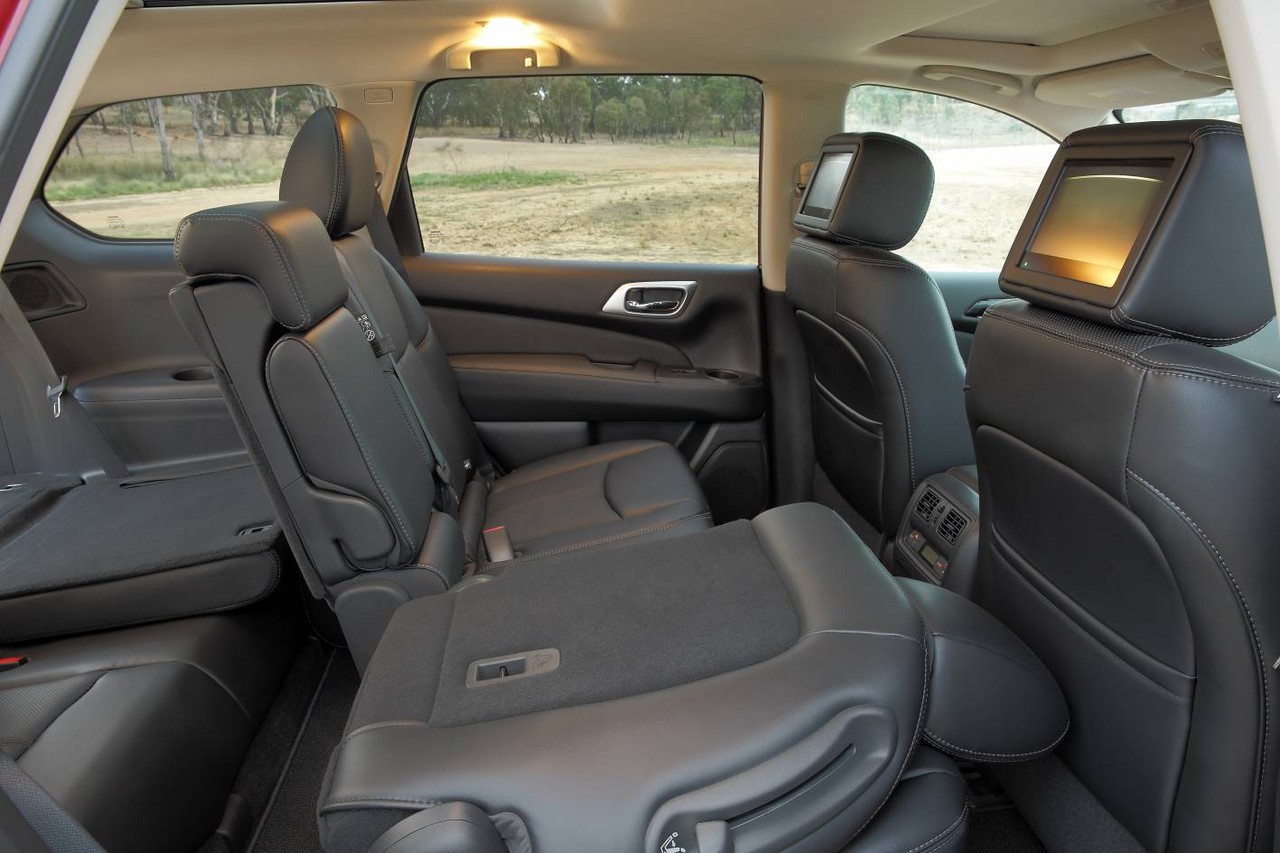
- Refined 3.5-litre V6 petrol engine
- Comfortable ride
- Spacious and versatile interior
- Quiet, well-insulated cabin
- Well-weighted steering
- CVT judder problem requires transmission replacement
- Flat seats lack support
- Some bodyroll when cornering
- Not particularly fuel-efficient
- Driveline vibrations in 4WD mode
- Hard dashboard plastics
Review: Nissan R52.I Pathfinder (2013-16)
Overview
Released in October 2013, the Nissan R52 Series I (R52.I) Pathfinder was a seven-seat SUV. Manufactured in Tennessee, United States, the R52 Pathfinder was available in front- and all-wheel drive models, both of which had 3.5-litre V6 petrol engines that were mated to continuously variable transmissions (Nissan’s ‘Xtronic’).
Nissan R52.I Pathfinder: VQ35DE engine
The 3.5-litre VQ35DE V6 petrol engine had an aluminium alloy cylinder block and head, cast iron cylinder liners, forged steel connecting rods, a micro-finished one-piece forged crankshaft, low-friction molybdenum-coated pistons, double overhead camshafts, four valves per cylinder, variable intake valve timing and a compression ratio of 10.3:1.
AWD systemThe Nissan R52 Pathfinder was fitted with Nissan’s ‘All Mode 4×4-i’ system which utilised an electronically-controlled coupling. The system had three drive modes which could be selected via a rotary knob on the centre console:
Dimensions and suspensionCompared to the Nissan R51 Pathfinder , the R52 Pathfinder was 195 mm longer (at 5008 mm), 112 mm wider (1960 mm), 2 mm lower (1768 mm) and had a 47 mm longer wheelbase (2900 mm). However, whereas the R51 Pathfinder shared its body-on-frame chassis with the D40 Navara , the R52 Pathfinder was based on Nissan’s D platform which also underpinned the Z51 Murano . As such, the R52 Pathfinder had MacPherson strut front suspension and independent, multi-link rear suspension. Safety equipmentStandard safety equipment for the Nissan R52 Pathfinder included dual front airbags, front side airbags, full-length curtain airbags, ABS, electronic brake force distribution, brake assist, electronic stability control, traction control and front seatbelts with pretensioners and load limiters. ANCAP crash testingIn ANCAP crash testing , the Nissan R52 Pathfinder received a five star adult occupant protection rating with a score of 35.73 out of 37. In the offset crash test, occupant protection was generally rated as good, though protection of the driver’s thighs and lower right leg were rated as acceptable (i.e. a slight risk of serious injury). Maximum points, however, were awarded in the side impact and pole tests. Features: Pathfinder ST, ST-L and TiStandard features for the Nissan R52 Pathfinder ST included 18-inch alloy wheels with 235/65 R18 tyres, a six speaker sound system with a CD/DVD player, MP3-compatibility, auxiliary inputs (3.5mm/USB/iPod/RCA) 2GB hard drive and a seven-inch colour display, three-zone climate control air conditioning, an eight-way power adjustable driver’s seat, cruise control, steering wheel audio controls, a rear view camera with path prediction, rear parking sensors, Bluetooth mobile phone connectivity, a leather-accented steering wheel and gearshift knob, push-button start, 60/40 split second row seats, 50/50 split and flat folding third row seats, remote central locking with proximity key, power windows and mirrors, a tilt adjustable steering column, four 12 volt power outlets, tyre pressure monitoring, rear privacy glass, roof rails, a trip computer and an immobiliser. The Pathfinder ST-L was further equipped with heated front seats, leather accented seat and door trim, power lumbar adjustment for the driver’s seat, a power adjustable front passenger seat, heated door mirrors, front fog lights, a power adjustable steering column (tilt only), an electrochromatic rear view mirror, front sunroof with manual sunshade and a panoramic glass roof with power sunshade. The range-topping Pathfinder Ti was distinguished by its 20-inch alloy wheels with 235/55 R20 tyres, thirteen speaker Bose sound system with a 9GB hard drive, satellite navigation with an eight-inch display, heated and cooled front seats, Nissan’s ‘Around View Monitor’, dual second row seven-inch DVD monitors, third row auxiliary A/V inputs, driver memory settings (for the driver’s seat, steering column and mirrors) and power-operated tailgate. BrochureRelated links
Review: Nissan R52.II Pathfinder (2016-20)OverviewCommencing production in late 2016 and officially released in Australia in March 2017, the Nissan R52 Series II (R52.II) Pathfinder introduced a new VQ35DD engine, active safety technologies for the ST-L and Ti variants, and revised suspension. Visually, the R52.II Pathfinder could be identified by its ‘V-Motion’ grille, headlights with boomerang-shaped LED daytime running lights, more aggressive bonnet, new front bumper and fog lights, door mirrors with integrated indicator lights, and new tail-lights. In April 2019, the Pathfinder range was expanded with the introduction of an ST+ variant. Nissan R52.II Pathfinder: VQ35DD engineThe R52.II Pathfinder was powered by Nissan’s VQ35DD engine which – relative to the VQ35DE engine which it replaced – introduced direct fuel injection (Nissan’s ‘Direct Injection Gasoline’ or DIG system). Other changes for the VQ35DD engine included a mirror-bore cylinder coating in place of the cast iron liners (reducing friction and weight), new pistons, a new intake manifold, e-VTC (electronic Variable Timing Control) and a higher compression ratio of 11.0:1 (previously 10.3:1).
|
